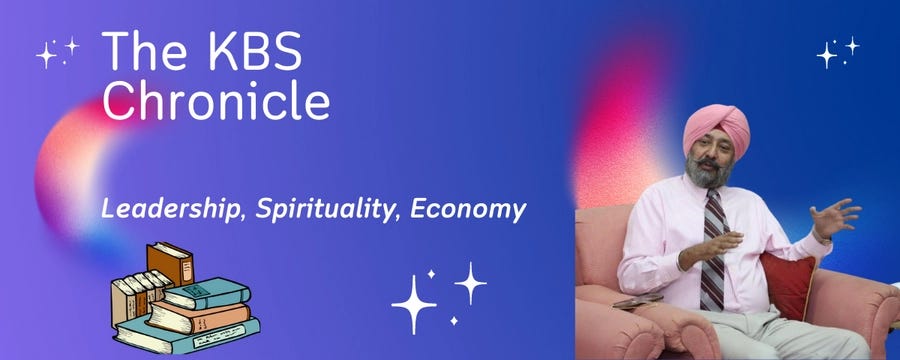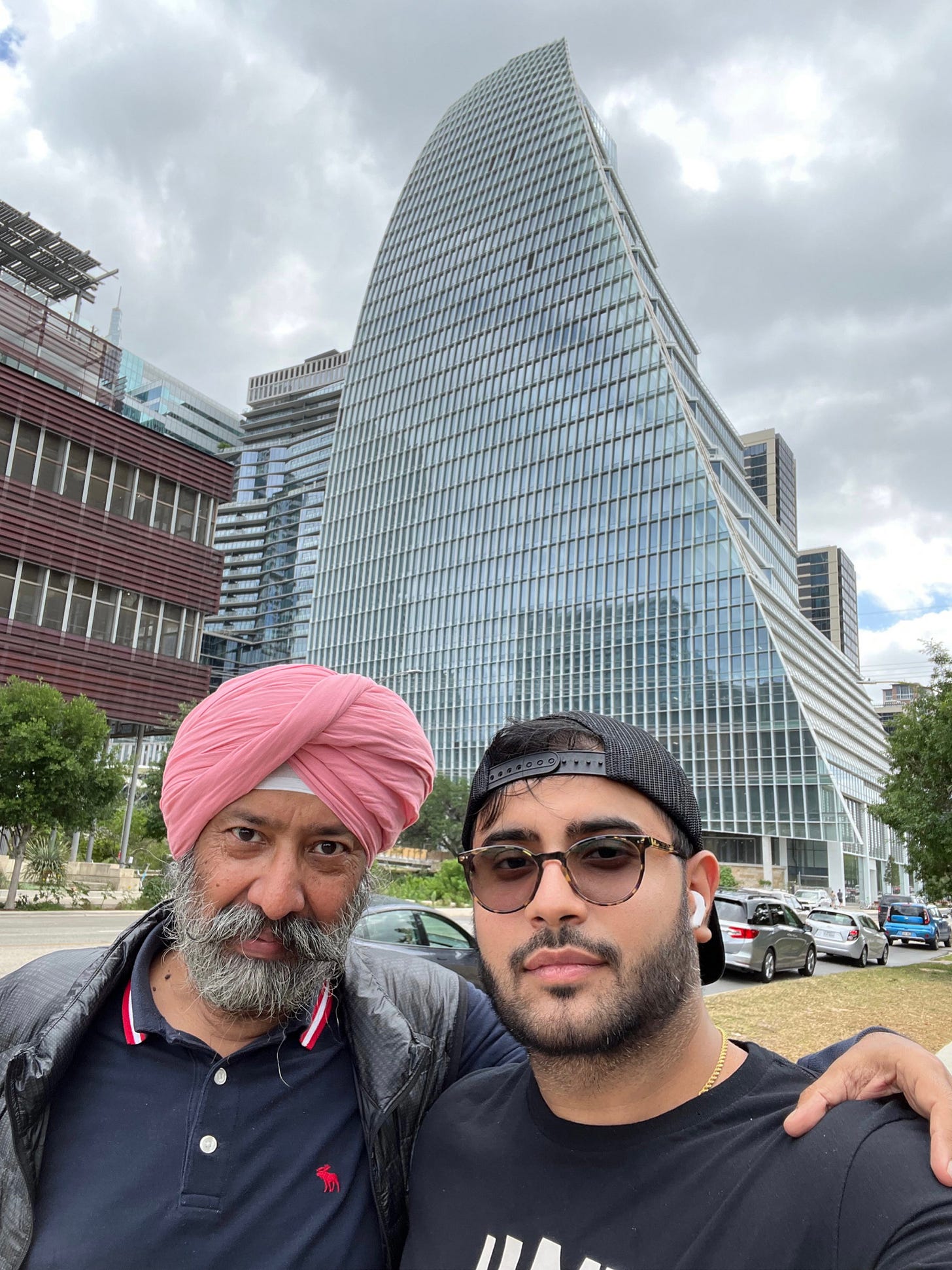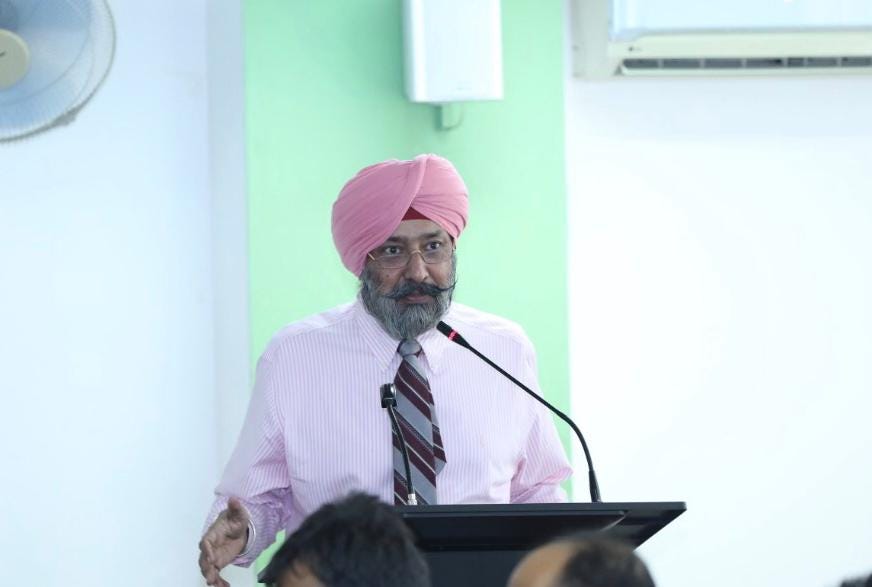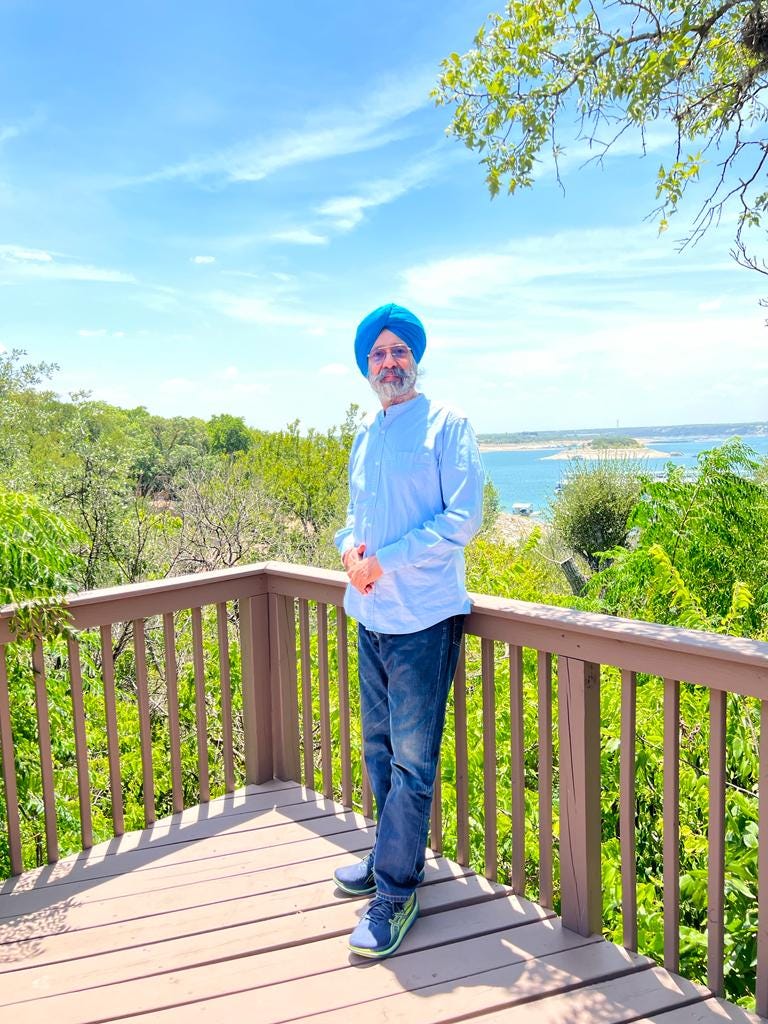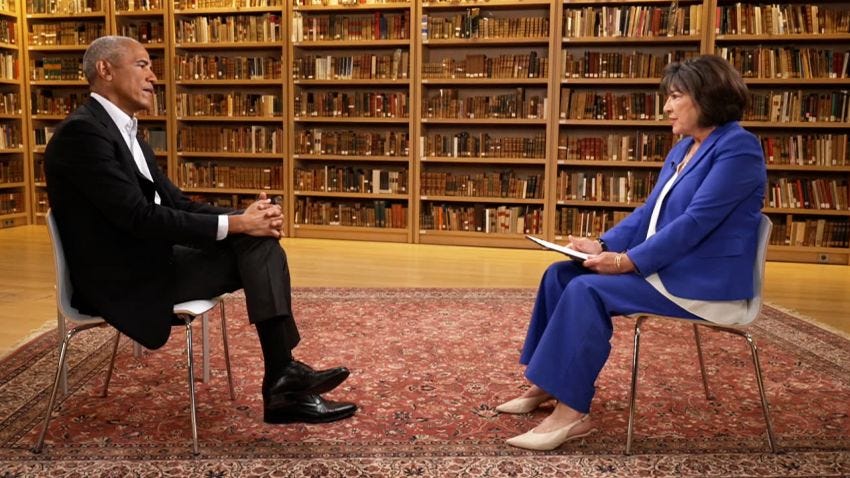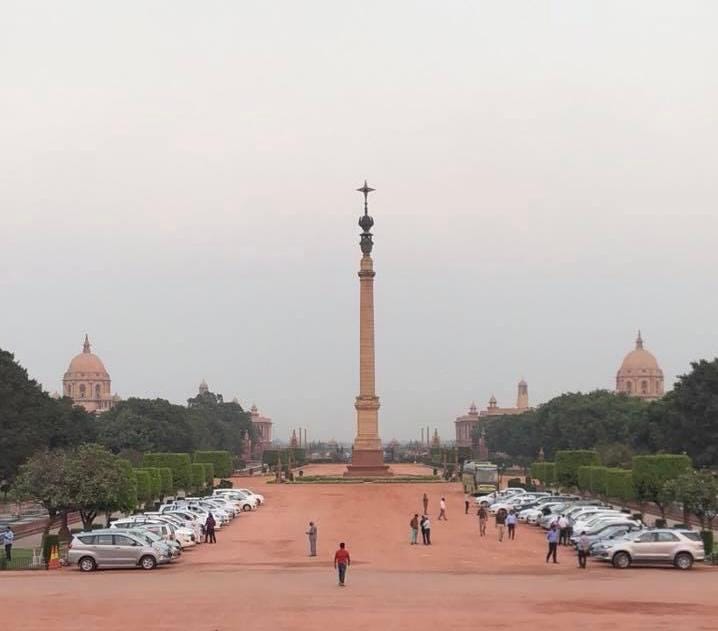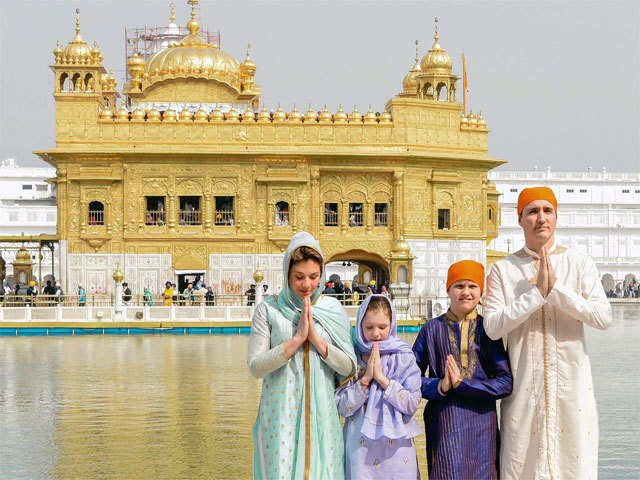The Thought Leaders' Must-read: "The KBS Chronicle"
From Newspapers to "The KBS Chronicle": Navigating the Information Age— the morning brew of the influential thought-leaders, in India and abroad.
The Bygone Dominance of Newspapers in Shaping Public Opinion
In bygone days, newspapers held an overwhelming sway over public opinion. The power to have one's perspectives featured within these publications was a privilege reserved for a select few, effectively establishing a near-monopoly on the supply side. Consequently, the general public found themselves largely subservient to these monopolistic platforms. This scenario calls to mind Sir Winston Churchill's insightful remark: "There’s nothing like public opinion—only published opinion."
The Shift to Digital Dominance
As the era of 24/7 satellite television and the gradual emergence of internet-based platforms unfolded, the once-dominant print media saw a decline in relative significance. The advent of blogs on the internet, particularly on platforms like Facebook, Twitter, LinkedIn, Instagram, YouTube, and more, ushered in a new era of information dissemination. However, this rapid expansion of digital channels brought with it an overwhelming deluge of information – much of it mere noise, lacking in substance and credibility.
The Dilemma of Information Overload
This shift brought about a new set of challenges – it isn’t just about the sheer volume of information but also the lack of editorial scrutiny. The internet became a breeding ground for unverified information, misinformation, and even deliberate disinformation. Fake news, masquerading as authentic content, and the proliferation of motivated, anonymous, and pseudonymous opinions, often driven by individuals and organizations, including foreign entities with vested interests, gave rise to a bewildering ecosystem of confusion. This surge in information generated more noise than clarity, adding to the overall chaos.
Challenges for Thought Leaders
This unfiltered deluge of information, akin to relentless white noise, posed substantial challenges. It didn't just affect the credibility of legitimate sources of news and perspectives but also proved to be a formidable obstacle for enlightened and influential thought leaders, as well as readers holding influential roles both in the corporate and government sectors. This encompassed career civil servants, the political executive, and even opposition parties, all struggling to make sense of this cacophony.
A Pressing Concern for the Indian Diaspora
This issue assumed critical significance for the Indian diaspora, as they frequently accessed news through local sources, which inevitably carried their own distinct biases, perspectives, and underlying agendas. What compounded this challenge was the artful packaging of these narratives as ostensibly objective reports on India. Furthermore, the significant time zone disparity, particularly in relation to the Pacific Time and Eastern Standard Time, meant that the information disseminated by traditional sources often arrived as not just dated, but in many cases, entirely irrelevant and obsolete.
Navigating the Information Quagmire
Drawing from my extensive experience as a career civil servant, encompassing 37 years of dedicated service within the IAS of the Punjab Cadre, including significant central deputation roles at the level of Joint Secretary and Additional Secretary, I encountered a formidable challenge. It was a predicament where I either found myself inundated with an overwhelming volume of irrelevant noise masquerading as information, or struggled to unearth any semblance of objective news and perspectives. This challenge was especially pronounced when it came to staying abreast of evolving developments, both on the national stage within India and on the international front, particularly those events bearing direct or indirect ramifications for our nation.
Authoring a Compendium: "Sub-Divisional Magistrate-- A Multifunctional Authority"
In the early stages of my career, when I assumed the role of a sub-divisional magistrate in a tranquil subdivision of Ludhiana district back in August 1986, it was after completing two years of rigorous training, encompassing both LBSNAA Mussoorie and specific training in Punjab. However, I soon discovered that although our training was up-to-date, it didn't align seamlessly with the vernacular language and local practices I encountered in the field.
When I voiced my concern to my Divisional Commissioner, who would later ascend to the position of chief secretary of the state, he offered a bold suggestion: "Why don't YOU write a handbook?" Initially taken aback by this proposal, I later realized its merit. This marked the inception of my book titled "Sub-Divisional Magistrate-- A Multifunctional Authority." Originally circulated as a cyclostyled version, it was subsequently published in 1989 as an official publication by the Department of Personnel and Training (DOPT), Government of India.
Although rooted in a Punjab-centric context, the book encompasses practical insights applicable across the country. Remarkably, even two years after my retirement from the IAS in July 2021, I am pleased to note that this compendium remains a valuable resource, not only for IAS probationers but also for the IPS cadre. For those interested in deeper exploration or dissemination to young officers, advocates, and other enlightened readers, I provide a link in the footnote below for further reference1.
Birth of "The KBS Chronicle"
In circumstances strikingly similar to those that led to the creation of my maiden handbook, I embarked on the journey of my newsletter, aptly named "The KBS Chronicle" This decision was spurred by the encouragement of my elder son, a technology enthusiast residing in the USA. I transitioned from sporadic contributions on platforms like medium.com, primarily covering civil services with a specific focus on the IAS, often with a touch of light-heartedness.
"The KBS Chronicle" was conceived with a clear objective: to concentrate on matters concerning India, transcending the role of a mere news reporter. Instead, it aimed to dissect unfolding events, regardless of their source, be it India or abroad. The emphasis was not on achieving editorial perfection or presentation finesse, but rather on delivering timely, objective, and reasonably well-analysed articles, published daily. These pieces presented not only my perspective but also delved into the pros and cons, often featuring conflicting viewpoints, much like the concluding verse of the timeless scripture, the holy Bhagavad Gita, where Lord Krishna aptly adds the qualifier "in my opinion."
Publication Timing and Frequency
Determining the optimal publication schedule and time generated diverse opinions. Some advocated for a weekly release, citing the success of popular newsletters. Others suggested an 11 AM IST publication time to align with when thought leaders and influential individuals are typically in their offices.
However, after some experimentation and a deeper consideration of my own instincts, I've settled on a daily publishing approach, with articles generally going live at 6 AM in the morning, India time. This choice is rooted in the familiarity of the generation that grew up in the 1960s and 70s, including senior citizens born post-Independence, who are accustomed to beginning their day with a cup of tea and the morning newspaper. Furthermore, in the event of unexpected developments, subscribers can expect to receive articles in their inboxes during mid-day and late evening hours.
Relevance to Younger Readers and Technology Insights
"The KBS Chronicle" holds value not only for older generations but also for young millennials and dedicated tech enthusiasts. My background as a trained electronics engineer with an MA in economics from the University of Manchester has allowed me to stay reasonably informed about technological advancements, particularly in fields like AR/VR and artificial intelligence, albeit at a basic level. Additionally, I have the privilege of receiving some of the most cutting-edge developments in technology, courtesy of insights shared by my elder son in the USA.
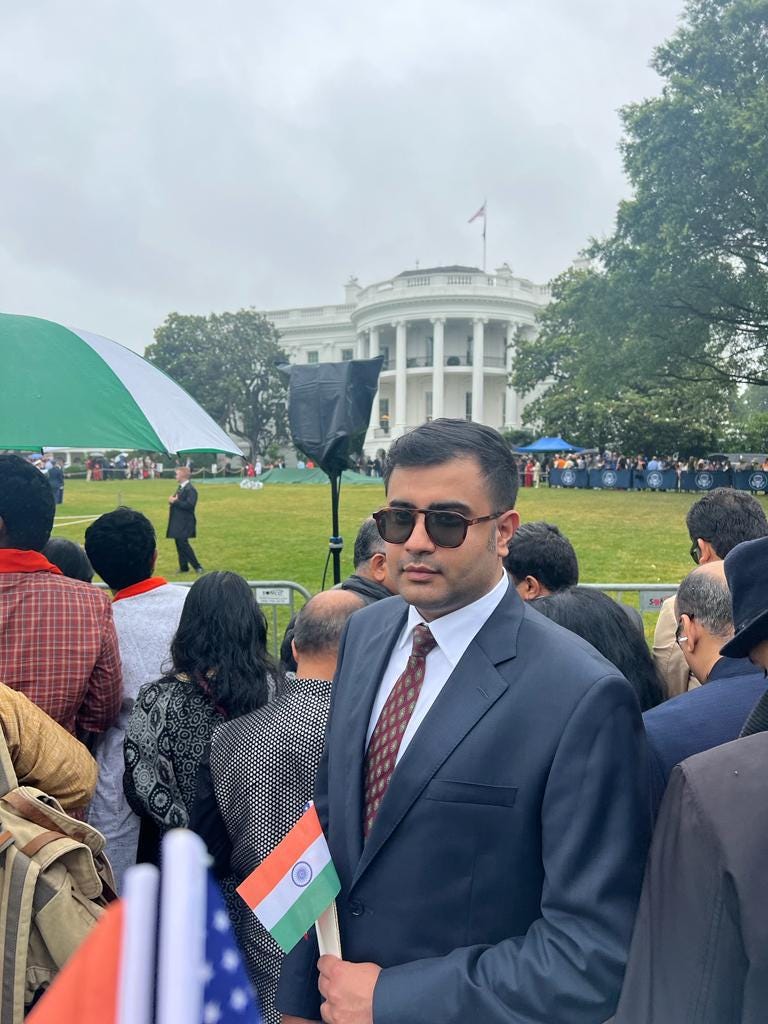
Free Content and Rapid Growth
Despite receiving counsel to the contrary, I've opted to keep "The KBS Chronicle" freely accessible. The newsletter has experienced explosive growth, with the subscriber count increasing nearly fivefold in the past three months. Notably, 20% of our readership is situated abroad, with the United States and Canada representing a substantial 17% share, while the remaining 3% encompasses the United Kingdom, Australia, New Zealand, and 18 other countries.
Key Article That Elevated "The KBS Chronicle"
One pivotal moment that propelled "The KBS Chronicle" into the spotlight involved my analysis of former US President Obama's controversial interview with CNN. This interview coincided precisely with the grand reception of PM Narendra Modi at the White House by US President Biden, in June this year. Although the contentious interview aired at 11:30 PM India time, my critical analysis, condemning President Obama and highlighting his contradictory decisions during his tenure, was published online by 1:30 AM. While traditional Indian media remained practically blank on the matter the next morning, my article shone as a guiding light in the vast expanse of cyberspace, piquing the curiosity of Indian leaders and readers, hungry for an Indian perspective2.
Similarly, my recent article on Canadian PM Trudeau's provocative remarks also gained considerable traction.
Quality of "The KBS Chronicle" Audience
In an era dominated by readership surveys and TRPs, the audience's quality often goes overlooked. While the flood of information bombards both the average reader and thought leaders, the sheer number of views doesn't necessarily reflect a publication's influence. In contrast, "The KBS Chronicle" boasts a readership in India heavily skewed towards the top echelons: political executives, top bureaucrats, civil servants, and even prominent editors from traditional print newspapers and online portals. Internationally, influential online platforms, particularly in Canada, known for their traditionally anti-India stance, have also subscribed, alongside numerous serving and retired diplomats.
Editorial Independence and Objectivity
"The KBS Chronicle" operates free from the constraints of advertising and owner influence, setting the stage for my personal curation of subjects and content for each article. While recognizing that subjectivity is inherent to every individual, I diligently strive to distance myself from personal opinions and biases, aiming to present a comprehensive exploration of various perspectives, including their pros and cons, on every issue. It's worth noting that I occasionally express my opinions unequivocally, exercising my fundamental right to do so, while also allowing readers to form their own conclusions.
Unlike many blogs, I refrain from aligning myself with the government's PR machinery, be it at the national or state level, including Punjab. However, I also avoid unwarranted criticism of PM Modi without cogent reasons or proposing alternative policy recommendations or alternatives.
Proactive Analysis in "The KBS Chronicle"
An additional noteworthy characteristic of "The KBS Chronicle" articles is my penchant for analysing forthcoming decisions. A prime example of this is my well-received piece on the Women’s Reservation Bill, published immediately after the Union Cabinet's reported decision at 6 PM on a Monday. It's important to note that I don't purport to possess insider sources within the corridors of power or political parties who provide privileged information. Instead, I rely on diligent internet research to extrapolate potential or probable outcomes3.
Exploring Spirituality: Diverse Content in "The KBS Chronicle"
While the majority of my articles in "The KBS Chronicle" are closely tied to current events or topics likely to make headlines, I also venture into the realm of spirituality, under the “spiritual sunday” segment. As a practicing Sikh, I have very humbly tried to explore the universal and all-encompassing teachings of Sri Guru Granth Sahib in some of my pieces. Additionally, I've made sincere efforts to craft articles based on the priceless wisdom of the holy Bhagavad Gita. Furthermore, I aim to promote understanding by sharing insights into various other religions, including Islam, Judaism, Buddhism, and even Christianity. Notably, my article on "The Lost Years of Jesus" garnered considerable attention, if not acclaim.
Solo Endeavour and Call to Action
In conclusion, I'd like to emphasize that "The KBS Chronicle" is a one-person initiative, with no support staff. My proficiency in technology and access to cutting-edge software enable me to deliver timely articles.
Every reader, regardless of their background, holds significant influence. I encourage you to absorb the content I've present. While I understand that not everyone may have the inclination to comment publicly, I would greatly appreciate it if you could share relevant articles with individuals who might find value in them. Your appreciation and support can be best expressed by sharing "The KBS Chronicle" within your circles.
https://docs.google.com/document/d/1FagGTfjmYf5jF01T8AMdvNw_VzNfBq9e/edit?usp=sharing&ouid=106723119440784079081&rtpof=true&sd=true
Follow the above link to read the “SDM’s Handbook”
Obama Lectures Modi on Minorities and Human Rights: Irony dies a thousand deaths
Obama’s Unsolicited Advice: Barack Obama, the 44th President of the United States from 2009 to 2017, recently gave a wide-ranging interview to CNN's Christiane Amanpour on "The Challenge to Democracy." The 55-minute interview, recorded earlier in Greece, was telecast on an “interesting” date, 22.06.2023, the day when the US President Joe Biden and Congr…
Women Reservation Bill: Thank you Modi ji but........
Introduction The Women's Reservation Bill was cleared by the Union Council of Ministers, meeting under the chairmanship of PM Narendra Modi, on the evening of Monday, 18 September. This development has injected new vigour into the ongoing five-day Special Session of Parliament. Although all political parties agree in principle on the question of women's …
PM Trudeau's Irresponsible Remarks about India
A Misguided Stance: PM Trudeau's Remarks and the Sovereignty of India The recent irresponsible remarks by Canadian Prime Minister Justin Trudeau have muddied the waters and cast doubt on Canada's stance towards India's unquestionable right to defend its sovereignty. While Trudeau assures re…


